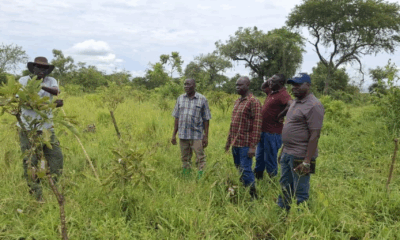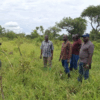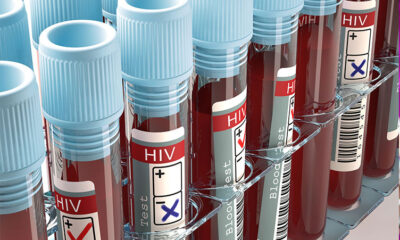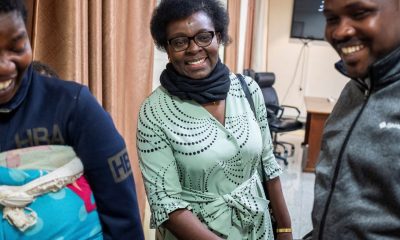Health
HIV in Uganda: 1.5M Infected, 61% Drop in New Cases, But Women and Youth Still Most Affected
Uganda’s HIV epidemic, though significantly reduced over the past two decades, still presents serious public health challenges, particularly among women, youth, and key geographical populations, health experts said at the launch of the UNAIDS Global AIDS Update Report in Kampala.
Delivering the keynote address, Dr. Vincent Bagambe from the Uganda AIDS Commission applauded the report’s theme “The Crisis and the Power to Transform”, saying it reflects the complex duality of Uganda’s current HIV/AIDS fight: progress against a persistent backdrop of systemic gaps.
“We are very delighted today to join UNAIDS at this launch of the Global AIDS Update report,” Dr. Bagambe said. “Whereas we’ve made progress, we are still faced with many challenges, as I will clearly highlight.”
As of the end of 2024, Uganda had 1.5 million people living with HIV. Dr. Bagambe emphasized the epidemic continues to exhibit a “female face,” with 930,000 of those infected being women, compared to 570,000 men and boys. Disturbingly, over 70,000 children aged 0–14 are also living with HIV.
“In the age group of 15 to 20, we have over 150,000 youth living with HIV,” he noted. “Most of them have acquired HIV recently, within the last one to three years. These are adolescents just beginning sexual activity.”
Despite the continued burden, Dr. Bagambe pointed to Uganda’s achievements in driving down the overall HIV prevalence rate. In the 1990s, the prevalence in the 15–49 age group stood at over 18%. Today, it is down to 4.9%, although gender disparities persist — 6.4% among women compared to 3.4% among men.
“While the epidemic is generalized, there are visible pockets of high concentration,” he said, noting that cities, municipalities, trading centers, areas near water bodies, and major transport corridors show higher prevalence. “We must scale up prevention and treatment efforts in these areas.”
A major success has been Uganda’s reduction in new infections — from 97,000 in 2010 to 37,000 by the end of 2024, marking a 61% decline. Additionally, mother-to-child HIV transmission has dropped by 75% over the past 15 years, with annual infections down from 18,600 to 4,700.
However, elimination of mother-to-child transmission remains just out of reach, something Jacqueline Macoha, the UNAIDS Country Director, said Uganda is well positioned to achieve — if it sustains its momentum.
“In this region, most new infections among women happen when they are pregnant or breastfeeding,” Macoha said. “Uganda has been doing an excellent job of expanding the prevention of mother-to-child transmission program. But we must ensure pregnant and breastfeeding women remain on treatment throughout.”
Macoha expressed concern over treatment gaps among men. Despite significant gains in antiretroviral therapy coverage, men are still disproportionately affected by advanced HIV disease.
“Men tend to test late, start treatment late, and are more likely to drop out,” she explained. “Patriarchy and stigma are major barriers to access. Poor health outcomes among men are not limited to HIV — it’s a broader issue.”
The global picture adds further urgency. At the end of 2024, 32 million people worldwide were on life-saving HIV treatment. Yet 1.3 million new infections occurred globally in the same year, and over 9 million people still lack access to vital HIV services.
“The AIDS response is currently experiencing an unprecedented funding crisis, compounded by human rights and humanitarian challenges,” Macoha warned. “Civil society programs — the very backbone of the HIV response — are being cut. We risk losing hard-won gains.”
Dr. Bagambe urged the media to amplify messages of prevention, treatment, and support, especially among vulnerable groups like youth, pregnant women, and men.
“You, as the media fraternity, can help us push toward our goal of ending AIDS as a public health threat,” he said. “This is not just a health issue. It is a societal issue, and your voice is critical in shaping behaviour and policy.”
Comments



























